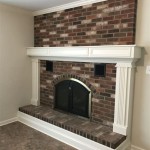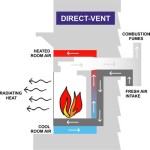```html
Propane Indoor Fireplaces: A Comprehensive Overview
Propane indoor fireplaces offer a convenient and efficient alternative to traditional wood-burning fireplaces. They provide warmth, ambiance, and aesthetic appeal without the mess and labor associated with wood. Understanding the operational principles, advantages, limitations, and safety considerations of propane fireplaces is crucial for informed decision-making and responsible usage.
These fireplaces utilize propane gas as their fuel source. Propane, a liquefied petroleum gas (LPG), is stored in pressurized tanks and delivered via a gas line to the fireplace unit. Inside the fireplace, a burner system mixes the propane gas with air, and this mixture is ignited to create a flame. The resulting heat warms the surrounding area, and the visual effect of the flames provides the desired ambiance.
The components of a propane indoor fireplace typically include a burner assembly, a gas valve, a control system (often including a thermostat and remote control), a vent or vent-free system, and a decorative surround or firebox. The burner assembly is responsible for mixing the propane and air, while the gas valve regulates the flow of propane. The control system allows users to adjust the flame height and heat output. Venting options include direct vent, B-vent, and vent-free models, each with its own installation requirements and safety considerations. The firebox provides the structural enclosure and often features decorative logs or other aesthetic elements.
Key Point 1: Advantages of Propane Indoor Fireplaces
Propane fireplaces offer several advantages over traditional wood-burning fireplaces. One significant benefit is convenience. Unlike wood-burning fireplaces, propane fireplaces require no wood chopping, stacking, or hauling. They are ignited with the push of a button or the flip of a switch, providing instant warmth and eliminating the need to build and maintain a fire. This ease of use makes them particularly appealing to individuals with limited mobility or those who prefer a hassle-free heating option.
Another advantage is efficiency. Propane fireplaces are generally more efficient than wood-burning fireplaces, converting a higher percentage of their fuel into usable heat. This means that less energy is wasted, resulting in lower heating costs. The efficiency of a propane fireplace can vary depending on the model and venting system, but even vent-free models, while requiring careful monitoring for oxygen depletion, offer a high level of heat output compared to the fuel consumed.
Furthermore, propane fireplaces produce significantly fewer emissions than wood-burning fireplaces. Wood smoke contains particulate matter, carbon monoxide, and other harmful pollutants, which can contribute to respiratory problems and air pollution. Propane, on the other hand, burns cleaner, producing fewer pollutants. While propane combustion does release carbon dioxide, a greenhouse gas, the overall environmental impact is generally considered to be lower than that of burning wood.
Propane fireplaces are also versatile in terms of installation options. They can be installed in a variety of locations, including homes without existing chimneys. Direct-vent models, for example, can be vented horizontally through an exterior wall, offering greater flexibility in placement. Vent-free models, as the name suggests, require no venting, making them even easier to install in some situations. However, it's crucial to adhere to all safety regulations and manufacturer's instructions when installing any type of propane fireplace.
Finally, propane fireplaces offer a consistent and controllable heat output. The flame height and heat output can be easily adjusted using the control system, allowing users to maintain a comfortable temperature. This is in contrast to wood-burning fireplaces, where the heat output can fluctuate considerably depending on the amount and type of wood being burned.
Key Point 2: Limitations and Considerations
While propane fireplaces offer numerous advantages, they also have certain limitations and considerations that should be taken into account. One primary consideration is the reliance on a propane supply. Unlike wood-burning fireplaces, which can operate independently of external fuel sources, propane fireplaces require a continuous supply of propane. This means that homeowners must either have a propane tank installed on their property or rely on regular propane deliveries. The cost of propane can fluctuate depending on market conditions, potentially impacting heating expenses.
Another limitation is the potential for gas leaks. Propane is a flammable gas, and leaks can pose a serious safety hazard. It is essential to have propane fireplaces installed and serviced by qualified professionals to ensure that all connections are properly sealed and that the gas system is functioning correctly. Regular inspections and maintenance can help to detect and prevent gas leaks. Carbon monoxide detectors should always be installed in homes with propane appliances to provide an early warning of any carbon monoxide buildup.
Vent-free propane fireplaces, while offering installation flexibility, require careful consideration regarding indoor air quality. Because they do not vent to the outside, the combustion products are released directly into the living space. While modern vent-free models are designed to burn cleanly, they can still contribute to indoor air pollution if not properly maintained or if used in poorly ventilated areas. It is crucial to follow the manufacturer's recommendations regarding room size and ventilation when using vent-free propane fireplaces.
The aesthetic appeal of propane fireplaces may also be a consideration for some homeowners. While the flames are generally realistic, they may not replicate the exact look and feel of a wood-burning fire. Some individuals prefer the crackling sound and aroma of burning wood, which are not present with propane fireplaces. However, many propane fireplaces offer decorative log sets that are designed to mimic the appearance of real wood.
Finally, the initial cost of installing a propane fireplace can be higher than that of installing some other types of heating systems. The cost will vary depending on the model, venting system, and installation complexity. However, the long-term cost savings associated with the efficiency of propane fireplaces may offset the initial investment over time.
Key Point 3: Safety Guidelines for Propane Indoor Fireplaces
Safety is paramount when operating propane indoor fireplaces. Adhering to safety guidelines is essential to prevent accidents and ensure the well-being of occupants. First and foremost, propane fireplaces should always be installed and serviced by qualified professionals. This ensures that the installation is performed correctly and that the gas system is functioning safely. DIY installations are strongly discouraged, as they can pose significant safety risks.
Regular inspections and maintenance are also crucial. The fireplace should be inspected annually by a qualified technician to check for leaks, corrosion, and other potential problems. The burner assembly should be cleaned regularly to ensure proper combustion, and the venting system should be inspected for obstructions. Any repairs or replacements should be performed by a qualified professional.
Carbon monoxide (CO) detectors should be installed in all homes with propane appliances. CO is a colorless, odorless gas that can be deadly. CO detectors provide an early warning of any CO buildup, allowing occupants to evacuate the premises if necessary. The detectors should be tested regularly and replaced according to the manufacturer's instructions.
Proper ventilation is essential, especially for vent-free propane fireplaces. Ensure that there is adequate airflow in the room where the fireplace is located. Opening a window or door slightly can help to prevent the buildup of combustion products. Never block or obstruct any vents or air intakes.
Never use propane fireplaces as a primary heating source for extended periods, especially in poorly ventilated areas. Over-reliance on propane fireplaces can lead to oxygen depletion and carbon monoxide buildup. Use the fireplace as a supplemental heating source and ensure that other heating systems are available.
Keep flammable materials away from the fireplace. Curtains, furniture, and other combustible items should be kept at a safe distance from the fireplace to prevent fires. Never store flammable liquids or materials near the fireplace.
Supervise children and pets around the fireplace. The glass front of the fireplace can become hot to the touch, posing a burn hazard. Keep children and pets away from the fireplace when it is in operation. Consider installing a safety screen or barrier to prevent accidental contact.
Finally, always follow the manufacturer's instructions for operation and maintenance. The manufacturer's manual provides specific information about the fireplace model, including safety precautions and troubleshooting tips. Read the manual carefully and follow all instructions to ensure safe and proper operation.
```
Propane Fireplaces An Economic Fuel

Improve Your Home S Ambiance With A Gas Fireplace Or Firepit

Propane Fireplaces Accessories Your Trusted Partner

Propane Fireplace Inserts Gas Log Sets Tunkhannock Pa Ace Robbins

Propane Fireplace Maintenance Premier Companies

Procom Vent Free Indoor Stove 25 000 Btu Standing Dual Fuel Propane And Natural Gas 170173 The Home Depot

Fireplace S In Tenneessee Gas Logs More Admiral Propane

Bluegrass Living 55 In Black Ventless Liquid Propane Gas Fireplace The Fireplaces Department At Com

5 Advantages Of A Propane Fireplace Installation Townsend Energy

Procom 26 000 Btu Vent Free Dual Fuel Propane And Natural Gas Indoor Fireplace Insert With T Stat Control 170082 The Home Depot
Related Posts








